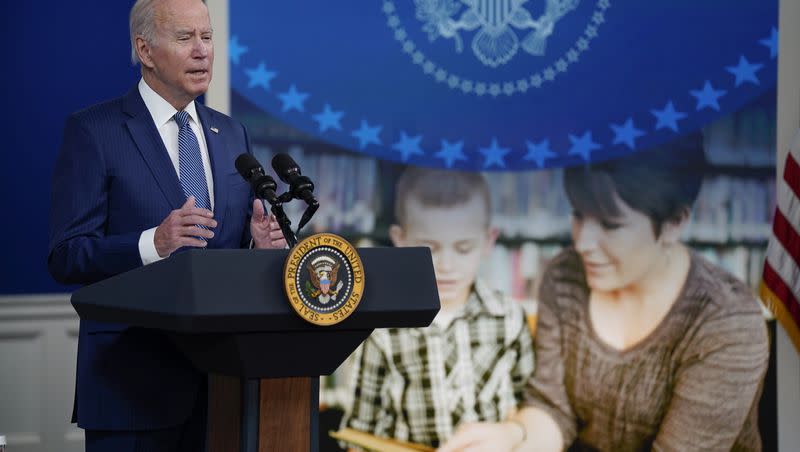Biden unveils new student loan forgiveness plan: Here’s who is qualified

- Oops!Something went wrong.Please try again later.
On Friday, the Biden-Harris administration announced that it will provide more than 804,000 Americans with student loans up to $39 billion in student loan forgiveness. In total, more than $116.6 billion has been approved for loan forgiveness, the administration said in a press release.
Here is what’s detailed in the new plan, and who now qualifies for forgiveness or lowered monthly repayment plans.
Who qualifies? The new plan allows forgiveness for those who have already made 20 or 25 years worth of monthly payments, “varying based upon when a borrower first took out the loans, the type of loans they borrowed, and the IDR payment plan in which the borrower is enrolled,” the statement says.
A statement from the White House says that those who have a balance of $12,000 or less will qualify for forgiveness after 10 years of payments under an income-driven payment plan instead of 20.
Related
Opinion: Why Biden’s Plan B for student loan forgiveness won’t work
Supreme Court rules 6-3 to reject Biden’s student loan debt forgiveness plan
Details: The move is an attempt to correct previous mistakes made by the federal student loan program in calculating the number of payments borrowers had made under an IDR plan to eventually qualify them for forgiveness.
Even though IDR rules had already promised loan forgiveness after 20 years of payments, NPR stated that out of 4.4 million people who had been repaying loans on an IDR plan for the past 20 years, only 32 had their debt canceled.
“For far too long, borrowers fell through the cracks of a broken system that failed to keep accurate track of their progress towards forgiveness,” said U.S. Secretary of Education Miguel Cardona. “Today, the Biden-Harris Administration is taking another historic step to right these wrongs and announcing $39 billion in debt relief for another 804,000 borrowers. By fixing past administrative failures, we are ensuring everyone gets the forgiveness they deserve, just as we have done for public servants, students who were cheated by their colleges, and borrowers with permanent disabilities, including veterans. This Administration will not stop fighting to level the playing field in higher education.”
SAVE plan: On June 30, the Biden-Harris administration announced an income-based repayment plan called the Saving on a Valuable Education, or SAVE, plan.
Individuals earning under $32,805 annually — and families of four earning under $67,500 — will qualify for a $0 monthly payment plan. Those who make more than these amounts will save “at least $1,000 a year compared to the current REPAYE plan,” saving single borrowers $90 monthly on repayments, and families of four $187 monthly, according to the Department of Education.
Additionally, the SAVE plan will include an “on-ramp” period, where borrowers will not be penalized or reported to credit bureaus for late or missing payment for up to 12 months, the White House said. However, interest will still accrue during this time.
Can these plans be blocked by other branches of the government? According to The Washington Post, some experts say that both the Biden-Harris administration’s new forgiveness plan and the SAVE plan lie within congressional powers over income-driven repayment.
“Congress created these plans that provide debt relief to people who make payments based on their income for 20 to 25 years. … What we’re seeing today are some long-needed fixes to that program so that borrowers actually get the relief that Congress intended,” said Abby Shafroth, director of the Student Loan Borrower Assistance Project, via the Post.

